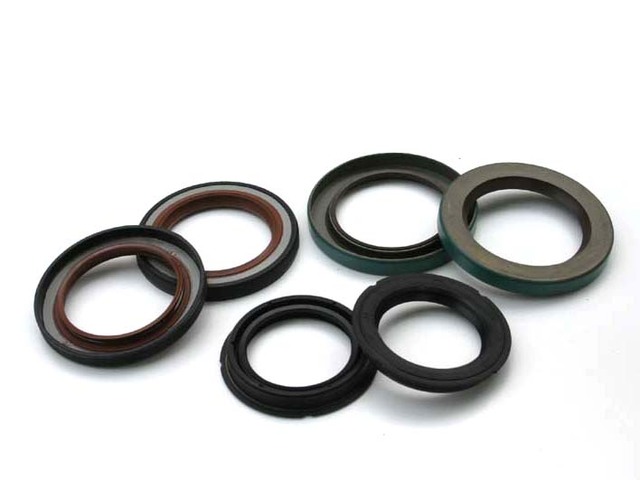Inhalt der Produktdetailseite
Produktname
The sealing mechanism of stable china oil seal design involves two factors, one is the sealing of the cavity, mainly the positioning of the outer edge of the oil seal (static component) in the cavity; the other is the dynamic seal between the sealing lip and the shaft surface. This is the oil seal for the oil seal. The most important function.
There are many types of oil seals. Among various forms of oil seals, spring rubber oil seals are most commonly used.
|
Produktspezifikation |
Anmerkung |
|
4-12-12 |
Airbag-Öldichtung |
|
6-12-3 |
Gasdichtung |
|
5.3-5.3 |
Nagel kleben |
|
6.7-7.8 |
Untere Abdeckkapsel |
|
10-2.7 |
Fluorid-Pad |
|
11-20-4/6.5 |
Staubdicht |
|
11.5-20-9.7 |
Abdichtung |
|
12,5-36-2,5/8,5 |
Staubdicht |
|
12,5-36-6,8 |
Staubdicht |
|
12,5-42-2,5/8,5 |
Staubdicht |
|
12,5-42-4 |
Staubdicht |
|
14.8-24.8-7.9 |
Luftpflegering |
|
14-30-43 |
Staubdicht |
|
15-22,5-5,5 |
Staubdicht |
|
15-23-5.6 |
Dichtungen |
|
15-43,1-2,5/10 |
Staubdicht |
|
15-48-2,5/10 |
Staubdicht |
|
16.5-24-6 |
Unterlegscheibe |
|
18-26-4,5/6 |
Gummidichtung |
|
18-26-4,5/6A |
Gummidichtung |
|
18-28-4,5/8 |
Staubdicht |
|
18-30-8 |
Staubdicht |
|
18-40-4.6 |
Staubdicht |
|
19-70-53 |
Staubschutzhaube |
|
20-36-30 |
Staubschutzhaube |
|
20-38-15/30 |
Staubdicht |
|
20-38-15/30A |
Staubdicht |
|
20-42-4 |
Staubdicht |
|
20-45-5.5 |
Staubdicht |
|
20-60-30 |
Vibrationskissen |
|
22-29.3-5.8 |
Gummi |
|
22-30-4,5/6 |
Gummidichtung |
|
22-32-4,5/8 |
Staubdicht |
|
22-40-5.5 |
Staubdicht |
|
22-42-4 |
Staubdicht |
|
22-50.7-31 |
Staubschutzhaube |
|
23-39.5-9.3 |
Staubschutzhaube |
|
24-30-32 |
Schutzkappe |
|
24-31.3-5.8 |
Gummi |
|
25-40-5,5 |
Staubdicht |
|
27-66-120 |
Staubschutzhaube |
|
28,5-36,5-48 |
Schutzkappe |
|
28-40-28 |
Gummilager |
|
30-1.3-2.4 |
Kolbenring |
|
30-39-5.5 |
Luftpflegering |
|
30-87-42 |
Schutzkappe |
|
37-40-8.5 |
Luftpflegering |
|
40-48,5-6,7 |
Gummi |
|
42,9-55,5-6,5 |
Unterlegscheibe |
|
42,9-58-6,5 |
Unterlegscheibe |
|
43,5-52-6,7 |
Gummi |
|
45-50-21 |
Staubschutzhaube |
|
47,9-57-6,5 |
Unterlegscheibe |
|
48-57,9-2,6 |
Abdichtung |
|
49-200~300 |
Airbag |
|
52,5-82-4 |
Abdichtung |
Auswahl des Öldichtungsgummis
Diesmal liegt der Schwerpunkt unserer Diskussion auf dem „zulässigen Temperaturbereich der Öldichtung“.
Tatsächlich lässt der Wellendichtring zu, dass der Temperaturbereich (Grenzwert) durch die Eigenschaften des Lippenmundmaterials, die Art des Dichtungsmediums, die Exzentrizität der Achse, die Verwendungszeit und die Geschwindigkeit beim Starten bestimmt wird.
Hier nehmen wir als Beispiel den S-förmigen Wellendichtring, bitte beachten!
PS: Typ t-Dichtlippen steigen zweimal auf S-Typ-Dichtlippentemperatur, während der V- und K-Typ mit dem S-Typ identisch sind.
Zur Auswahl des Dichtlippenmaterials des Wellendichtrings muss die Temperatur (T0) am Lippenende grob eingehalten werden.
Die höchste gebräuchliche Temperatur (T1) und die höchste gebräuchliche Temperatur (T1) und das Lippengleiten aufgrund der Achse und Lippen (siehe Abbildung 3-1) an der Maschine und dem Gerät an der Maschine und dem Gerät. Formel.
Das heißt: T0 = T1+T2
Je nach Temperatur und Dichtungsmedium am Ende der Lippe kann das Lippenmaterial ausgewählt werden, aber die zulässige Temperatur des Lippenmundmaterials kann aufgrund des Betriebszustands der Maschine geändert werden.
PS: Bei Verwendung von Getriebeöl und hochviskosem Silikonöl beträgt der Lippentemperaturanstieg T2 das 1,5-fache des Wertes von Abbildung 3-1 und die Temperatur der Unterlippe in der Unterlippe das 3-fache.



